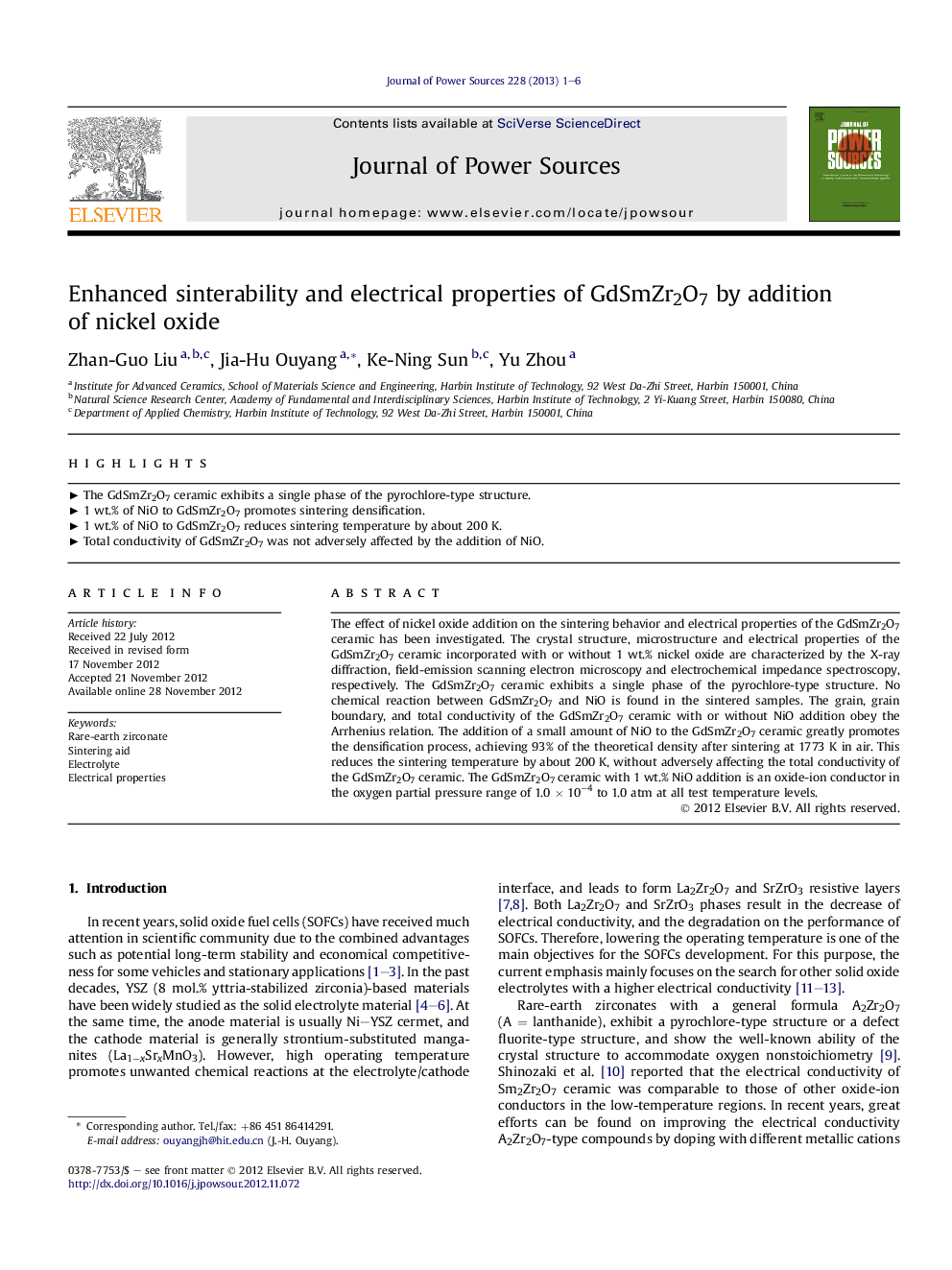| Article ID | Journal | Published Year | Pages | File Type |
|---|---|---|---|---|
| 1288184 | Journal of Power Sources | 2013 | 6 Pages |
The effect of nickel oxide addition on the sintering behavior and electrical properties of the GdSmZr2O7 ceramic has been investigated. The crystal structure, microstructure and electrical properties of the GdSmZr2O7 ceramic incorporated with or without 1 wt.% nickel oxide are characterized by the X-ray diffraction, field-emission scanning electron microscopy and electrochemical impedance spectroscopy, respectively. The GdSmZr2O7 ceramic exhibits a single phase of the pyrochlore-type structure. No chemical reaction between GdSmZr2O7 and NiO is found in the sintered samples. The grain, grain boundary, and total conductivity of the GdSmZr2O7 ceramic with or without NiO addition obey the Arrhenius relation. The addition of a small amount of NiO to the GdSmZr2O7 ceramic greatly promotes the densification process, achieving 93% of the theoretical density after sintering at 1773 K in air. This reduces the sintering temperature by about 200 K, without adversely affecting the total conductivity of the GdSmZr2O7 ceramic. The GdSmZr2O7 ceramic with 1 wt.% NiO addition is an oxide-ion conductor in the oxygen partial pressure range of 1.0 × 10−4 to 1.0 atm at all test temperature levels.
► The GdSmZr2O7 ceramic exhibits a single phase of the pyrochlore-type structure. ► 1 wt.% of NiO to GdSmZr2O7 promotes sintering densification. ► 1 wt.% of NiO to GdSmZr2O7 reduces sintering temperature by about 200 K. ► Total conductivity of GdSmZr2O7 was not adversely affected by the addition of NiO.
